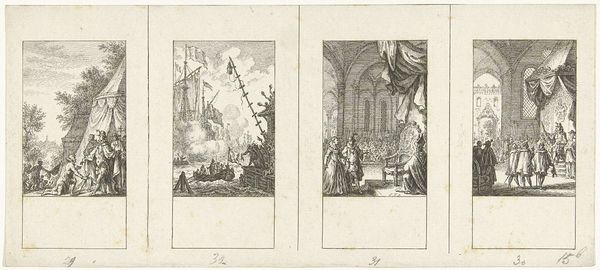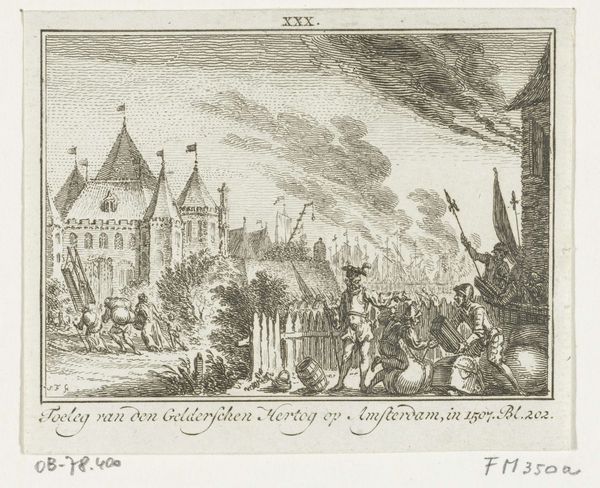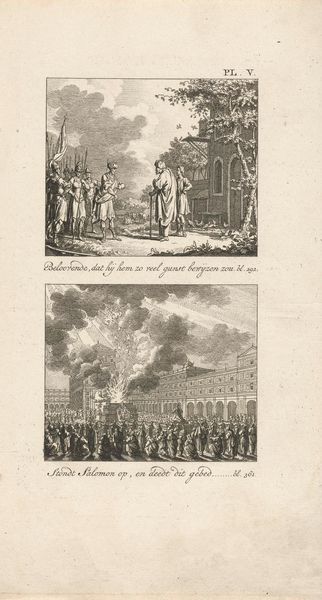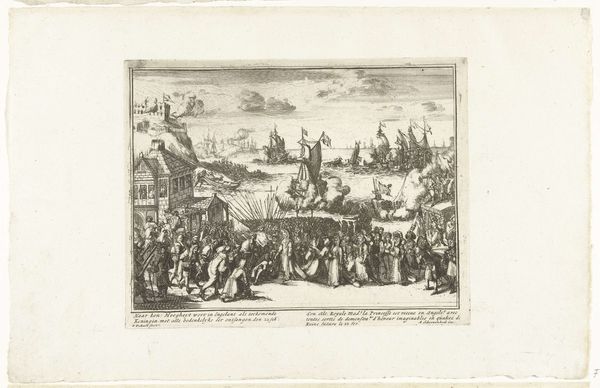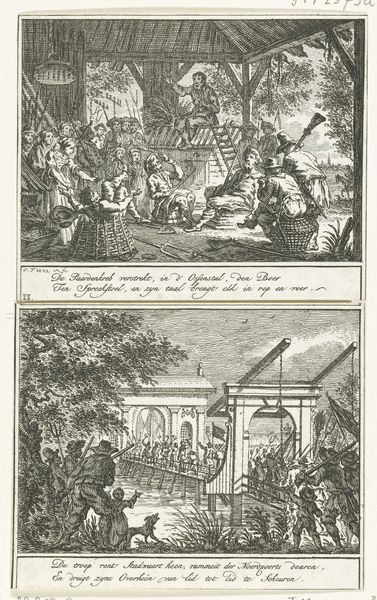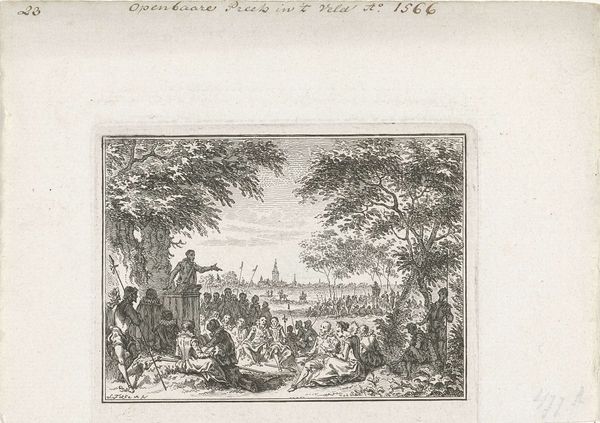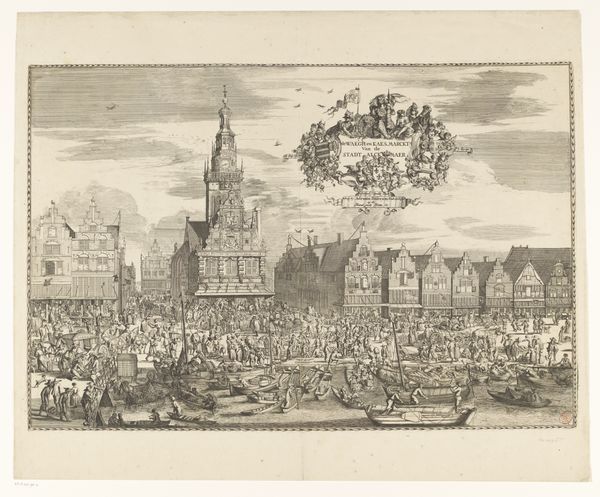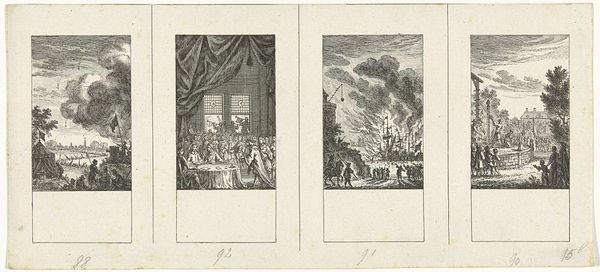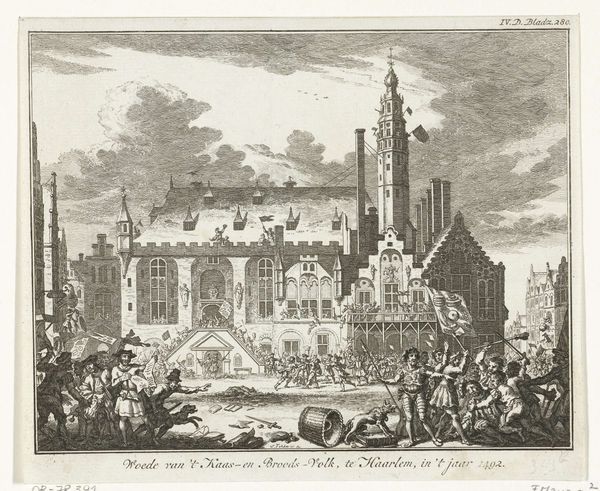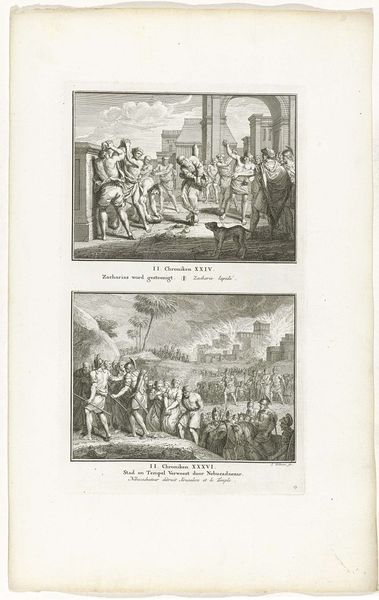
De Haarlemmers verzoenen zich met hertog Albrecht, 1492, en troepen Karel van Gelre buiten Amsterdam, 1507 1784
0:00
0:00
simonfokke
Rijksmuseum
print, engraving
#
dutch-golden-age
# print
#
landscape
#
line
#
history-painting
#
engraving
Dimensions: height 175 mm, width 111 mm
Copyright: Rijks Museum: Open Domain
Curator: Editor: So, this is "De Haarlemmers verzoenen zich met hertog Albrecht, 1492, en troepen Karel van Gelre buiten Amsterdam, 1507" created in 1784 by Simon Fokke. It's currently at the Rijksmuseum. It's a print – an engraving actually – showing two different historical events. The line work is so detailed, and it feels very illustrative. What's your take on it? Curator: What I see here are not just two historical scenes, but a very deliberate presentation of power dynamics mediated through the labor of the engraver, Simon Fokke, and the materials at hand. The printing process itself – the tools, the ink, the paper – they all played a crucial role in shaping and disseminating these political narratives. How were these prints distributed, and who was the intended audience? That tells us something about the intended control over the narrative. Editor: That's interesting. So, you’re saying the materials used, like the specific type of paper or the quality of the engraving, are clues about the intended social class it was produced for? Was this meant for mass consumption or for the elite? Curator: Exactly! The means of production are inextricably linked to the message being conveyed. Consider the deliberate act of reconciliation depicted versus the military action. Who benefits from framing history this way, and how does the accessibility of prints impact popular sentiment during this period? Furthermore, the artist's labour is integral to the object and the dissemination of ideology, shaping collective memory through repetitive execution. What kind of socio-political conversations could arise simply by having access to this artwork? Editor: That’s really insightful! I hadn’t thought about the choice of materials as being so tied to the dissemination of specific ideas. Now I’m wondering about the role of printmaking in shaping historical consciousness at the time. Curator: And considering how this affects its place within art history as a discipline and industry as a whole? Examining it like that shifts the focus from artistic genius to collective processes, ultimately reshaping historical consciousness. Editor: It does! I learned to look beyond the subject of the artwork and delve deeper into the social and material contexts, something often ignored.
Comments
No comments
Be the first to comment and join the conversation on the ultimate creative platform.


